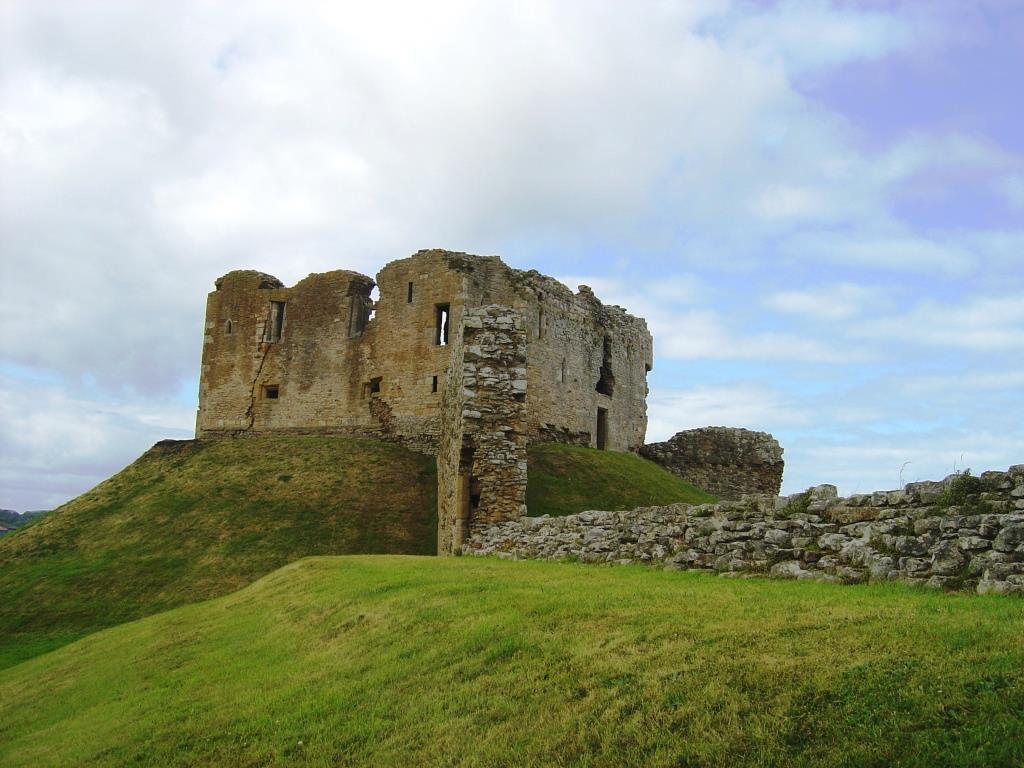Duffus Castle

Duffus Castle Details
Duffus Castle, ruined C14-15 castle of Sutherlands on earlier earthwork styled as motte + bailey; C14 hall on top of mound
- Closest To: Elgin, Lossiemouth
- Access: Free Public Access
- Grid Reference: NJ189672
Duffus Castle consists of a large stone hall built on the summit of what was once a promontory/island projecting into a sea loch, and a walled courtyard. The hall is separated from the courtyard by a deep ditch, which gives the impression of a motte and bailey type castle.
At the time of its assumed foundation, Duffus was probably a small tidal island off a larger island, and separated from the Moray coast by Spynie Loch, which was open to the sea at the east, and to the west was probably salt marsh – which had also been open to the sea in Viking times. As an offshore defensive site it may well have been fortified well before its assumed foundation by Freskin in the first half of the 12th century. Any remnants of the castle of Freskin was destroyed by the Scottish in 1297, and rebuilt by the Cheynes, who had acquired it by marriage in 1280. When the Cheyne line ended with two heiresses, Duffus passed to the Sutherland family.
It was the Sutherlands who built the hall in the 15th century, and it remained the principal dwelling of the castle through to the 17th century, although it was sacked during the 1450s. In the 1640s the castle was all but destroyed by Covenanters when the first Lord Duffus accompanied Charles II into exile. The castle was not repaired – perhaps during this attack the hall collapsed down the mound and was considered beyond repair.
The group of domestic buildings by the stairs up the mound were probably built in the 16th or 17th century, and were certainly renovated in about the 1660s, since Viscount Dundee was able to stay in the castle in 1689, but soon after this Lord Duffus elected to build an entirely new dwelling at Duffus House, and the castle was abandoned. The castle is free to enter, and managed by Historic Scotland.
Official Historic Scotland page
Become a supporter of my work to access a more detailed history